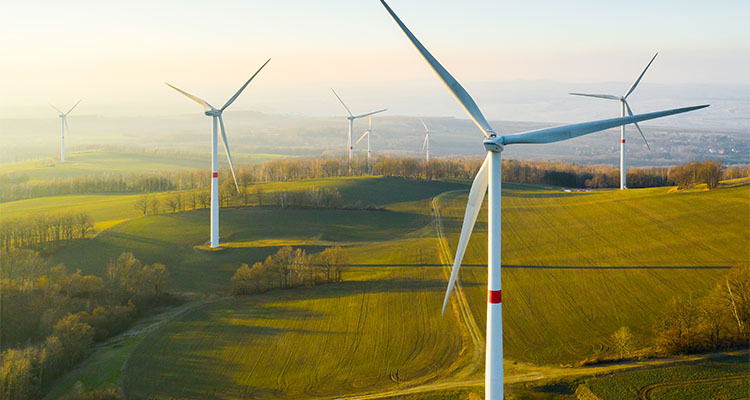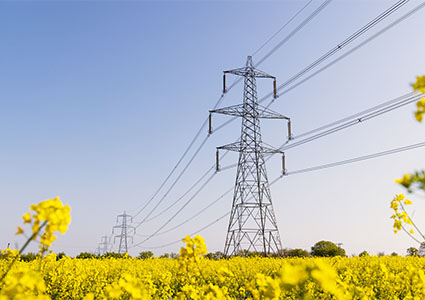
Craig Golinowski discusses meeting global energy needs while reducing carbon emissions
Carbon Infrastructure Partners is a private equity firm targeting risk-adjusted returns across the carbon life cycle, from hydrocarbon-based energy production through to carbon capture utilization and storage (CCUS). “When I finished business school, joined JOG Capital, which, at the time, was a relatively small, boutique private equity firm,” begins Craig Golinowski, President & Managing Partner of Carbon Infrastructure Partners. “I joined as Partner, and we subsequently grew the business, managing over one billion Canadian dollars of capital in hydrocarbon-based energy resources. We were involved in many of the early, horizontal drilling start-ups in Western Canada, and had considerable success with that.
“Our energy strategy at Carbon Infrastructure Partners is a continuation of what we have successfully done at JOG Capital for over 14 years. I have been in private equity management for 16-to-17 years now, and have seen the changes in technology, alongside the political pressures that surround emissions and the climate, and I knew that something would need to change with our business.
“While my wife was studying at Stanford University,” he continues, “I spent a lot of time on campus, getting to know the carbon management folks who were members of the geology and earth sciences faculties. Although I wasn’t a student, it was really good to learn about CCUS in an academic setting. So, with that experience, we started to question how we could make a contribution to the climate issue.
“To my mind, there is basically no alternative to fossil fuels. I don’t believe renewables can ever replace fossil fuels, simply because the production of renewable energy is dependent, to one degree or another, on fossil fuels. Throughout the last century, all we have done is increase our use of fossil fuels because that is how prosperity is driven. Of course, the cumulation of greenhouse gases in the atmosphere is a very big problem. To contribute to mitigating this, as energy professionals, we look to CCUS and carbon management, whether that’s sequestrating emissions into the Earth’s surface or maybe changing processes or systems to be far less emission intensive in general.
“We don’t have enough oil and gas produced by democracies. For example, let’s look at the situation in Pakistan, which had a plan to switch its electricity system to be run on LNG. However, with an LNG shortage and civil unrest, if Pakistan then reverts those plans and requires greater dependency on coal, then all the behavior in the Western world is negated by one country acting to have prosperity and development for its people. That problem occurs in other countries too. If you care about emissions, it’s a global problem and you have to look at it in terms of what is going to happen if we don’t have enough oil and gas, globally.”
 Sensible solutions
Sensible solutions
Craig reinforces that, as an organization, Carbon Infrastructure Partners is trying to communicate a message on energy, emissions, and security that reconciles these three competing forces, and articulates it in a way that is consistent with thermo-dynamics, physics, and with reality. He goes on: “As I’ve worked through this trilemma, I am increasingly convinced that much of the green movement is special-interest driven, particularly in terms of people benefitting from subsidies that peddle government’s preferred solutions. I don’t think the binary attitude of ‘oil and gas bad, renewables good,’ is the appropriate approach. I don’t really know how we change that conversation, other than to talk about it.
“From a day-to-day perspective, we run funds that are active in oil and gas, and particularly so, in Western Canada, and we have a team in the US working on CCUS and carbon management. While this sector is policy-driven in many respects and much slower than we would like, we have been trying to build up that emerging business line.
“I see CCUS as one in a portfolio of solutions. To me, it would make sense to consider solutions from a regional or local perspective. What makes sense from an energy optimal mix in the California Bay area is not what makes sense in Ohio, for example. These locations have different climates, and different sub-surface resources,” explains Craig.
It would seem then that a blanket solution may not be the answer. Craig continues: “West Texas boasts a vast wind energy industry alongside being the biggest oil and gas producer in the US. It’s because of the natural conditions in that area that this specific mix makes sense. Conversely, in Ohio, it would probably make sense to utilize nuclear power. Ohio experiences cloud cover most of the time. The area doesn’t have much wind and doesn’t really have any oil resources. It has some gas towards the Marcellus Basin, so nuclear and gas would probably be the optimum mix in that part of the Mid West.
Carbon management
“In terms of carbon capture, my net zero scenario involves increasing global natural gas consumption by three-, possibly four-fold. You could potentially eliminate the use of coal, and then partially abate emissions from natural gas through carbon capture and storage. When we use natural gas, we can take the carbon out of it and put it back in the sub-surface which is where it fundamentally came from. A basic model of zeroing out coal, and moving the system massively towards natural gas, nuclear, and renewables; that is a reasonable approach to solving the broader global issue in my opinion,” he emphasizes.
“Somehow or other, there needs to be a value placed on an avoided emission, and really, that can only be implemented by government. In effect, a utility industry would need to be created to manage carbon. While Canada is not starting from scratch when it comes to setting incentives for investment in clean technologies, it’s not really there yet. This is partly because of the drive to replace everything with renewables, rather than implement carbon management. As a result, there is a serious tension among environmentalists, NGOs, the fossil fuel industry, and utility companies.
“If you look at the global energy mix,” Craig expounds, “the reality is that fossil fuel demand is up. There is a social narrative that we are at peak demand, but that’s simply not the case. Demand is growing in all categories, but the supply has been stunted by restrictions on capital. There seems to be a consensus that we should not fund fossil fuel development.
“What this means is that the price of fossil fuels is likely to go up. This, in turn, has a knock-on effect on food production costs and those costs are passed on to consumers. Energy prices also continue to march higher, and impact political and geopolitical stability. This lack of investment becomes self-defeating, because when we have more economic stress in society, it makes investment in carbon reduction more difficult. In much of the Western world, we’ve had this wonderful time of an affordable and secure energy and food supply. Now, as the consumer starts having to allocate more of their wallet to basic necessities, spending becomes less prevalent, which is reflected in other areas of the economy. This also plays into inflation, interest rates, and disruption to trade.”
Collaborative approach 
To Craig’s mind, the first step to tackling this issue is telling the truth. “You can see it now with Shell and BP. In the last quarter or two, these vast organizations have finally been admitting that while they bought into the renewables story, they are now changing tactic. ExxonMobil and Chevron took a lot of flack from institutional investors because, at the time, they were unwilling to toe the line.
“The government has picked oil, gas, and coal as its losers, and is intervening in the market in ways that are fundamentally not sensible. I’m not sure how you overcome the inherent problem we have that certain industries are wholly dependent on subsidies. It may be the case that there will be tough times before our political systems are able to sort this out and have more rational perspectives.
“In my experience the most interesting and valuable conversations I have had are with environmentalists, working through how to actually solve the climate issue. When you have a conversation with people, you may not agree, but, at least, you are working together. I really think the path forward is collaborative. Framing the issue as a binary problem actually makes it worse. Rather than simplifying the standpoint to being in one camp or the other, in reality, we are all in the same camp, and each solution is unique to a specific place.
“To move beyond this, to something broader, to a more reasonable conversation that considers the issue with more complexity, is a better approach. Carbon capture is just one more piece of the puzzle. If it makes sense to build solar panels, then let’s build them, but let’s also remember that those solar panels use coal as part of their production process, and have a relatively short useful life. The solutions are neither good nor bad, but simply part of the overall mix,” Craig concludes.